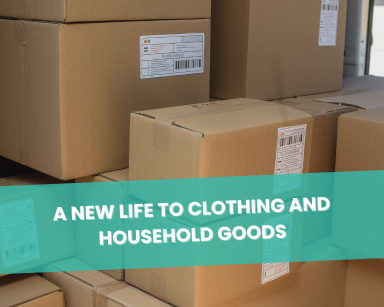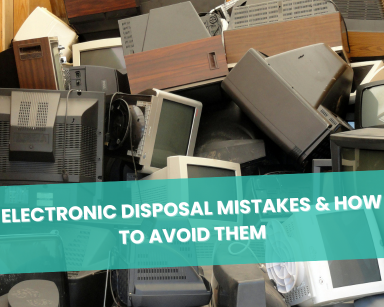How much waste is generated from the cosmetic industry? A true Reality
In the glitz and glamour of the beauty world, there’s a silent crisis unfolding: Cosmetics disposal. According to a 2022 study by the Environmental Protection Agency (EPA), the cosmetic industry contributes to a staggering percentage of global plastic waste.
This isn’t just about empty lipstick tubes or discarded foundation bottles, it’s a reflection of our choices and their profound impact on the environment.
As we stand in 2023, it’s time to confront the uncomfortable truths and address the mounting crisis of cosmetics disposal.
The beauty products we adore come with an environmental price tag, and it’s essential to understand the full scope of this issue.
Table of Contents
The Scale of the Cosmetic Packaging Problem
The allure of cosmetics goes beyond skin-deep. But as we indulge in the latest beauty trends, the environmental cost is escalating.
According to the World Health Organization (WHO), cosmetic waste is one of the top contributors to landfill pollution.
This isn’t merely an environmental concern, it’s a ticking time bomb with repercussions that could span generations.
- The Numbers Behind Beauty Packaging:
The beauty sector, as per Global Source, is a significant contributor to plastic waste. Every year, millions of cosmetic products are produced, and a significant portion of these end up as waste. From mascara tubes to skincare bottles, the sheer volume of discarded items is alarming.
- Environmental Impact:
Beyond the statistics, the tangible cost is our deteriorating environment. Cosmetic waste, especially non-biodegradable packaging, is a major contributor to marine pollution and land degradation. These discarded items often find their way into oceans, harming marine life and disrupting ecosystems.
The Personal Care Industry’s Contribution to the Waste Crisis
The personal care industry, from skincare lotions to fragrances, plays a pivotal role in the escalating waste problem. The sheer volume of products manufactured, used, and then discarded paints a grim picture of the industry’s environmental footprint.
- From Lipsticks to Lotions:
Every product, every choice adds to the environmental burden. The lifecycle of these products, from production to disposal, is fraught with challenges. For instance, a single lipstick tube, when discarded, can take hundreds of years to decompose.
- The Lifecycle of a Cosmetic Product:
Each stage, from raw material sourcing to the final disposal, presents environmental challenges. Sustainable practices are not just essential but imperative for the future. For example, the extraction of certain ingredients can lead to deforestation and habitat loss.
Zero Waste Week and the Beauty’s Waste Crisis
Zero Waste Week, a global initiative, has turned its spotlight on the cosmetic industry. The movement emphasizes the urgent need for sustainable solutions in beauty and personal care.
- The Global Movement:
This initiative is gaining momentum, urging brands to rethink their packaging and disposal strategies. The goal is to reduce waste, promote recycling, and encourage consumers to make eco-friendly choices.
- Case Studies:
Brands like EcoBeauty and GreenGlam are setting benchmarks, showcasing significant waste reduction and sustainable practices. These brands have introduced refill stations, biodegradable packaging, and take-back programs to minimize waste.
The Lesser-Known Facts About Cosmetics Disposal
There’s more to cosmetics disposal than meets the eye. Microplastics, harmful chemicals, and non-biodegradable materials lurk in many products, contributing to environmental degradation.
- Beyond the Surface:
As per a report by the United Nations Environment Programme (UNEP), microplastics from cosmetics are a significant contributor to marine pollution. These tiny particles, often found in exfoliating products, wash down our drains and enter waterways, posing a threat to marine life.
- The Human Cost:
The repercussions aren’t limited to the environment. Contaminated water sources and polluted soils can have direct implications for human health. Chemicals from improperly disposed cosmetics can seep into groundwater, affecting drinking water quality.
Happen Ventures: Leading the Way in Sustainable Cosmetics Disposal:
Instead of following the conventional paths of recycling or waste-to-energy transformations, Happen Ventures has carved a niche for itself with its beneficial reuse model.
Beneficial reuse, as championed by Happen Ventures, is about giving products a second life, ensuring they serve a purpose even after their primary use has ended.
By donating cosmetics and personal care items to communities in need, Happen Ventures ensures that these products don’t end up as waste.
This approach not only diverts potential waste from landfills but also addresses pressing societal needs.
Imagine a scenario where an unused lipstick or a surplus skincare product finds its way to someone who can’t afford such luxuries. It’s not just about waste reduction, it’s about dignity, empowerment, and making a tangible difference in people’s lives.
One of the standout initiatives by Happen Ventures was their work in Puerto Rico. When faced with a surplus of unwanted sanitizers stored in a warehouse, instead of discarding them, Happen Ventures stepped in.
Recognizing the pressing need for hygiene products in many local communities, especially during challenging times, they facilitated the donation of these sanitizers.
This ensured that communities had access to essential hygiene products, emphasizing the company’s commitment to societal well-being over mere profit.
Happen Ventures’ approach is a testament to the fact that sustainability isn’t just about preserving the environment, it’s also about uplifting communities and fostering a sense of shared responsibility.
In their journey, they’re not only reshaping the narrative around cosmetics disposal but also setting a precedent for other industries to follow.
The Future of Cosmetics Disposal
The horizon holds promise. With emerging technologies and a global shift towards sustainability, there’s hope for a greener future in cosmetics disposal.
- Emerging Technologies and Innovations:
Biodegradable packaging, waste-to-energy technologies, and sustainable sourcing are paving the way for a brighter future. Companies are now investing in research to find eco-friendly alternatives to traditional packaging materials.
- The Role of Consumers:
Our choices, as consumers, have the power to drive industry practices. By making informed decisions, we can steer the industry towards sustainability. This includes supporting brands with sustainable practices and disposing of products responsibly.
Conclusion
The cosmetic industry is at a pivotal juncture. The choices we make today will shape the environmental legacy we leave behind. Companies like Happen Ventures are showing the way, but the onus is on each one of us. By supporting sustainable practices and making informed choices, we can ensure a cleaner, greener future.











